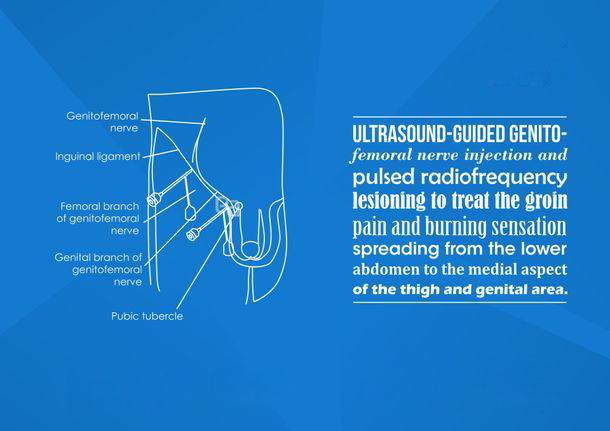

Treatments
ABDOMEN & PELVIC PAIN

Genitofemoral Nerve Block
What is genitofemoral nerve block?
Genitofemoral nerve is a nerve in the abdomen that supplies the skin over the scrotum in males or labia in females and front of the upper thigh. Genitofemoral nerve block is used to treat a chronic pain condition called genitofemoral neuralgia, which is a most common cause of lower abdomen pain and pelvic pain. The main symptoms include burning pain and numbness over the lower abdomen that radiates to the genitalia and into the inner thigh. It is caused by compression of the genitofemoral nerve anywhere along its path or injury to the nerve during lower abdominal surgeries like hernia repair.
How is genitofemoral nerve block done?
At Atlas Pain Care, Coimbatore it is done in a clean room under ultrasound guidance and is a day surgery procedure. You will be asked to lie on your back. Your abdomen, thigh, and groin will be cleaned with an antiseptic, and a sterile drape will be placed. Under ultrasound guidance, a needle is directed toward the intended target area, and local anesthetic will be administered in close proximity to the nerve to block signals from reaching the brain. The procedure will last approximately 10 minutes. Post procedure you will have numbness over the front or outer parts of the thigh and it will take 4-6 hours to wear off.
Pulsed-radiofrequency lesioning of the genitofemoral nerve
When the response to the block is good, but only lasts for a brief period, pulsed-radiofrequency lesioning of the genitofemoral nerve is offered. In this, the radiofrequency electric needle is introduced under ultrasound-guidance and is placed close to the nerve. The proximity to the nerve is then confirmed by passing tiny electric currents. Pulsed-radiofrequency is then performed. It is a daycare procedure that takes 30-45 minutes to perform. You will be discharged home on the same day.
What are the risks associated with this procedure?
This procedure is safe. However, with any procedure, there are risks, side effects and possibility of complications. The most common side effect is temporary pain at the injection site. Fortunately, serious side effects and complications are uncommon. Ultrasound to provide visualisation of the targeted structures significantly minimises risk.
Please read our FAQ section to know more about the do's and don'ts prior to and after the procedure.

